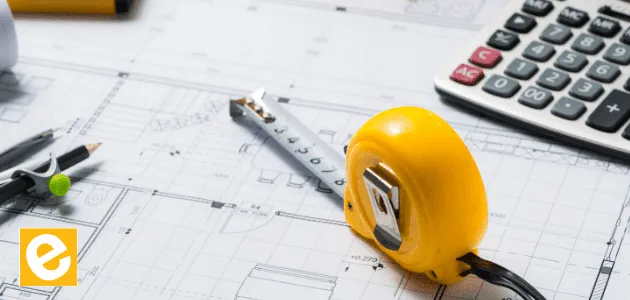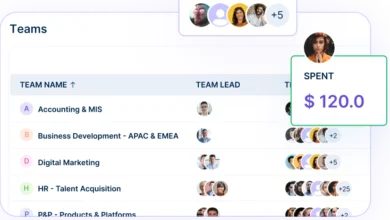How to Estimate Construction Costs

Interpreting all the direct costs ( material and labor costs ) and indirect costs ( i.e., administrative worker salaries and devaluation of equipment ) for a project falls under the criteria of estimating construction. The professional estimators perform this crucial step in the preconstruction process to ensure the running of the project in a profitable way. We’ll survey all the professional constructors’ steps to estimate the project’s total costs.
Importance of Accurate Estimating
Accurate estimating is the key factor for both the estimators and owners to view the progress from preconstruction to project completion. It is essential for contractors to inspect the project running within the allotted budget, create competitive and reasonable bids, keep the project on time and budget and decide their profit margins.
Steps in the Construction Estimating
Here is the step-by-step guide to creating the accurate and effective estimates to streamline the business progress:
1. Review the Bid Package
This package includes all the documentation required for the bidding, such as owner-contractor agreements, general conditions, and construction specifications. The contractors are bound to complete the project in the designed bid package. They follow the listed protocol to evaluate the bid package:
- Ensuring the presence of all drawings and specifications
- Having the overview of the complete project
- Evaluation of structural requirements
- Reviewing the mechanical, electrical, and plumbing ( MEP ) requirements
- Determination of nonstandard items
2. Conduct a Site Visit
The estimators do not rely simply on the drawings and photographs of the particular construction site. They visit the site to get a better picture of the conditions and details of the project. It may depend on the type of project. In some cases, contractors do not visit the construction site. By conducting a visit, they determine the factors that influence the project’s overall cost. For example:
- A site with a poor drainage system, difficult access, adjacent buildings, and poorly located utilities requires more infrastructure for effective management which raises the overall estimate of the project.
- In addition to this determination, they get an idea of the local requirements and codes, availability of contractors and rental updates, and nearby areas that affect the delivery and transportation of materials.
Generally, the estimators need to overview the project’s cost and specifications according to the site’s location.
3. Perform a Material Takeoff
Estimators deliver the quantity takeoffs by evaluating the construction documents and calculating the material requirements for the project. They notice the following aspects during the estimation of material takeoffs:
- Quantity ( e.g., windows and doors )
- Area ( i.e.flooring and roofing )
- Volume ( e.g. mortar )
- Length ( e.g., rebar and wires )
The constructors may design a bill of quantities ( BOQ ) to clarify the bid leveling process. Even after the provision of BOQ, contractors still perform a takeoff to ensure the quantities for the project. In the technical era of construction, contractors use estimating software tools to get the takeoffs for a better project running.
For example, plumbing estimator services help accurately assess the quantity and cost of pipes, fittings, fixtures, and labor required for the plumbing system. Similarly, electrical estimators calculate the material needs for wiring, lighting, and electrical components, while carpenters and general contractors use takeoffs for wood framing, drywall, and flooring materials.
Each trade requires its own specialized takeoff, ensuring that all aspects of the project are accurately estimated. Whether it’s for roofing, electrical, HVAC, or plumbing systems, having detailed, accurate takeoffs is key to minimizing errors, staying within budget, and meeting project deadlines.
4. Solicit Pricing from Suppliers and Vendors
After effectively creating drafts for the project requirements, the contractors collaborate with vendors and suppliers. During estimating the materials, the contractors should consider the incited preferences given below:
- Material waste demands ordering extra materials
- Bulk pricing may affect the order size
- Limited lifespan of quotes
During the estimation, The contractors must be mindful of how the project influences the associates’ equipment costs ( e.g., maintenance, wastage, shortage).
5. Evaluate Labor Requirements
While estimating the labor costs, the contractors are bound to determine the following specifications:
- Which roles are required for the project?
- How many hours are needed to complete the project?
- How responsive and productive is the team, determined by past projects?
The crew required for the construction usually includes laborers, tradespeople, and assistants. Instead of calculating the simpler hourly wage, the estimators must evaluate the loaded Labor that provides for:
- Wages
- Taxes
- Insurance ( considering the health and workers’ compensation insurance )
- Retirement specifications
- Union dues
- Sick or vacation leave
6. Determine Insurance and Bonding Costs
Insurance and bonding costs benefit contractors and owners and should be added to project estimates. Almost all companies require general insurance based on the size, scope, and role they perform. It also includes other policies such as:
- Builder’s risk insurance
- Errors and omissions
- Commercial auto insurance
- Inland marine insurance
In addition, the contractors demand some construction bonds significantly leading some commercial or public projects like:
- Payment bonds
- Performance bonds
- Bid bonds
Generally, the insurance and bonds are factored by annual costs, therefore contractors design them throughout the year.
7. Calculate Overhead and Indirect costs
The overhead costs are required for moving a construction business, so the constructors add the indirect costs with the direct filed costs.
Indirect field costs include:
- Permits
- Trailers or temporary offices
- Site cleaning
- Professional services
- Equipment costs ( depreciation, insurance, taxes, and fuel )
- Software
There are also general overhead costs, also referred to as General and Administrative (G&A) expenses. Contractors cover the overhead costs in their estimates of projects annually for the smooth operation of the business. It includes:
- Administrative salaries
- Utilities
- Taxes
- Rental cost for office space
- Devaluation
- Insurance
- Software subscription
8. Account for Profit and Contingency
The estimators manage the total costs to profit margin and contingency after estimating the project’s total costs. As contingency is generally expected for the project depending on the type of construction, company size, and project risks, it is separated for overruns and waste. Commonly, most contractors include 5-10% of contract cost for contingency.
Turning an Estimate into Bid Proposal
A bid manager generally designs a detailed construction proposal clearly and concisely. For easy comparison of the bid price section to the specifications section, the CSI format is applied in the Estimating process.
Types of Estimates
Each type of estimate serves a specific role. It is selected based on where it will be applied in the project estimation.
The American Society of Professional Estimators ( ASPE ) offers given five levels of estimates:
- Order of magnitude
- Schematic design
- Design development
- Construction documents
- Bid estimate
Most contractors prefer the bid estimate, which estimates the project’s total costs effectively during estimation.
Construction Estimating Software
Estimating software helps the contractors speed up the project running by automatically calculating requirements. With the efficient use of software, skillful or professional contractors win projects in the construction market.
Estimating software facilitates the contractors by providing the following benefits:
- Automated material and labor takeoffs
- Reducing the errors through computerized calculations
- Increasing productivity and competitiveness
- Helping the contractors lead multiple projects at a time saves time.
Data-driven Estimating for Long-term Growth
For any construction business, estimating is a critical step for estimators. Job costing data from previous projects and comprehensive knowledge of direct, indirect, and overhead costs enable companies to establish effective and profitable estimates. Stay organized and save time using estimating software tools to streamline the project.




